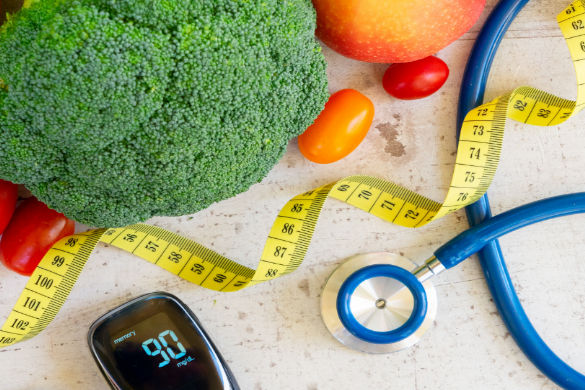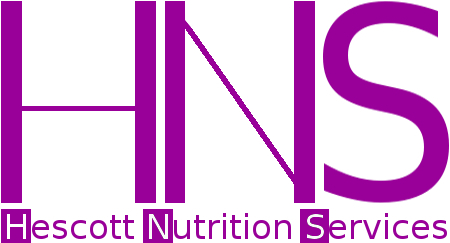.
Welcome to my blog!
.
Nutrition, Good for Your Heart and Your Diabetes
By Hescott Nutrition Services | posted in February 2023 | Nutrition, Heart and Diabetes Health, Insulin Resistance, Cardiovascular Disease, LDL Cholesterol, Lifestyle Habits, Polyunsaturated Fatty Acids, Monounsaturated Fatty Acids, Reduce Added Sugars, Salty Six, Pulses, Dried Beans, Weight Loss, Healthy Blood Sugar, Lower Blood Cholesterol, Low Sodium, DASH.
Did you know that February is Heart Awareness Month? Heart disease is both incredibly prevalent and serious. In the United States (U.S.), it is the top cause of death for both men and women. Diabetes doubles your risk of developing heart disease or a stroke than someone who doesn't have diabetes and is younger. Your risk of developing heart disease increases the longer you have diabetes.
However, the good news is that altering your lifestyle habits can help you reduce the chances of developing heart disease and improve your overall heart health. You can better manage your diabetes by making some simple lifestyle changes

Why is Nutrition Important?
Nutrition plays a multidimensional role in diabetes and cardiovascular health and may have a positive effect on the hormone insulin, insulin resistance, blood pressure, blood lipid (LDL, HDL cholesterol, and triglycerides) levels, and inflammation. Let’s explore these topics in greater depth below.
LDL Cholesterol:
LDL cholesterol is often called the "bad" cholesterol, while HDL cholesterol is often called the "good" cholesterol. People told they have high cholesterol need to lower their LDL cholesterol. It is recommended that people with high cholesterol reduce their saturated fat intake. When reducing the consumption of saturated fat, a key factor is what replaces it. It is important to look at the quality of the fats and carbohydrates replacing saturated fat in the diet. It is best to replace saturated fat with polyunsaturated fatty acids (PUFAs), monounsaturated fatty acids (MUFAs), and carbohydrates from whole foods. Focus your eating habits on heart-healthy foods and limit choices that raise risk, including excess calories. There is high-quality evidence that for every 1% of saturated fat calories replaced by:
- PUFA
LDL decreases by 2.1 mg/dL - Triglycerides decrease by 0.88 mg/dL - MUFA
LDL decreases by 1.6 mg/dL - Triglycerides decrease by 0.35 mg/dL - Carbohydrate
LDL decreases by 1.3 mg/dL - Triglycerides increase by 0.97 mg/dL
Reducing Added Sugars
Another important consideration for heart health and managing blood sugar levels is reducing added sugars.

The target for overall health is no more than 5 to 10% of calories from added sugars.
- On a 2000-calorie diet, this would be 25-50 grams maximum.
- On a 1600-calorie diet, this would be 20-40 grams maximum.
The Dietary Guidelines for Americans 2020-2025 recommends ≤10% of calories come from added sugar. For an individual consuming 1800-2000 calories daily, ≤180-200 calories from added sugars means ≤45-50 grams of added sugar per day. The American Heart Association recommends ≤100 calories/day (25 grams) for women and ≤150 calories/day (36 grams) for men. The current average in the U.S. is 13% of calories from added sugars. This is approximately equivalent to 65 grams of added sugar. A good goal is to cut out ¼ to ½ of the current amount of added sugar.
- Cookies / Wafers
- Liquid sweeteners such as maple syrup, agave, and honey
- Chocolates / Candy
- Cakes / Pies
Blood Pressure
Blood pressure (BP) is the force of blood pushing against artery walls. High blood pressure increases the risk of heart attacks, strokes, chronic heart failure, and kidney disease. The American Heart Association and American College of Cardiology recommend reducing dietary sodium to lower blood pressure.
The American Heart Association and American College of Cardiology recommend reducing dietary sodium to lower blood pressure. There is strong evidence for reducing sodium intake and reducing sodium in the context of a healthy dietary pattern.
There is moderate evidence for the following:
- Reducing sodium intake to < 2300 mg/day
- Reducing sodium by at least 1000 mg/day to lower blood pressure even if the recommended sodium intake is not reached
- Reducing sodium intake to 1500 mg/day may lead to a greater decrease in BP
- 1000 mg of sodium can be cut from your typical daily intake by making four swaps and tweaks that each cut sodium by 250 mg or more. Seek choices that promote health!v
The American Heart Association identifies the six foods that provide the most sodium (42% of the average US intake), called the Salty Six:
- Sandwiches
- Pizza
- Bread
- Poultry
- Soup
- Deli Meat
An additional 13% of the average U.S. intake comes from grain-based mixed dishes and meat, poultry, and seafood mixed dishes. Common culprits include savory snack foods, condiments, cheese, processed vegetables, and legumes.
It can also be helpful to know the meaning of the different FDA-approved nutrition claims on food labels, such as:
- Salt/Sodium-Free: less than 5 mg in a serving
- Very Low Sodium: 35 mg or less in a serving
- Low Sodium: 140 mg or less in a serving
- Reduced Sodium: at least 25% less sodium than the "regular" version of the product
- Light in Sodium or Lightly Salted: at least 50% less sodium than the "regular" version of the product
Note that reduced sodium products and light in sodium or lightly salted products can still contain a great deal of sodium, depending on how much sodium is in the "regular" product.
Dietary Approaches to Stop Hypertension (DASH)
The Dietary Approaches to Stop Hypertension (DASH) diet is effective at all blood pressure levels but has the greatest effect in people with high blood pressure who consume a high-sodium diet. Additionally, it augments the effectiveness of antihypertension medications.
In a study comparing the DASH diet with 2400 mg sodium to a standard U.S. diet with 3300 mg sodium, blood pressure decreased by 7.1/3.6 mm Hg with the DASH diet.
Healthful eating patterns (including the DASH diet) have the following characteristics:
- Calorie Balanced for a Healthy Weight
- Predominantly plant-focused as compared to a standard Western diet
- Long-term habit
- Part of a healthy lifestyle includes exercise and stress management
Pulses
Pulses can be a fun, affordable addition to a healthy diet. Pulses are the dried edible seeds of legumes. They include dried peas, lentils, chickpeas, and dried beans (such as black beans, kidney beans, navy beans, etc.). Pulses are high in protein and fiber and low in fat.

The benefits of eating pulses are:
- They promote healthy blood sugar. They contain viscous fiber, which slows stomach emptying and slow carbohydrate absorption. They also contain protein which slows stomach emptying as well. These actions reduce the glycemic effect of the meal.
- They lower blood cholesterol. According to an analysis of 25 randomized controlled trials (RCTs), a daily serving of pulses can lower LDL by at least 5% (about 6.6 mg/dl), sometimes in as little as two weeks. In most RCTs, the comparison was to heart-healthy diets, so pulses may have an added beneficial effect.
- They can aid in weight loss and maintenance. The viscous fiber in pulses slows stomach emptying, which leads to a feeling of fullness. Additionally, the protein in pulses stimulates gastric hormones that lead to satiety signals.
Add pulses to omelets, soups, whole grains, tacos or burritos, salads, pasta sauces, stir-fries, and chilis.
In conclusion:
Although heart disease is the leading cause of death for both men and women in the U.S. and increases your risk of developing it the longer you have diabetes, changing your diet and lifestyle to include a balanced diet, regular exercise, and stress reduction may help you live longer.
Are you seeking personalized support to manage your diabetes, weight, or kidney health? Look no further; go to to book an appointment and see how our services can help you, or 347-915-3738.
We accept All Major Insurances!
